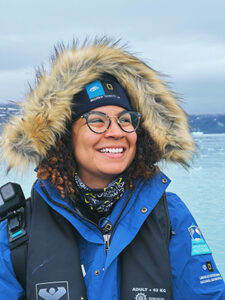While temperatures in the New York City area begin to feel arctic, one of our Prospect School team members can tell you exactly what that part of the world truly feels like, thanks to her experience this past summer.
Caitlyn Homol, a Psychology Teacher at Brooklyn Prospect High School, visited the High Arctic this past summer as a part of a
Grosvenor Teacher Fellowship (GTF)— a professional development opportunity for pre-K–12 educators made possible by a partnership between Lindblad Expeditions and the National Geographic Society.
Homol and 49 other educators from around the United States and Canada made up the first cohort to be selected since the COVID-19 pandemic began. As part of their Fellowship, members of the 2023 cohort take on a two-year leadership commitment, serving as program ambassadors, fostering connections and collaboration with other educators in the National Geographic community and beyond.
We chatted with Homol about the cool (pun intended) experience. Read below.

How long was the expedition?
The expedition was 17 days long! We started in Oslo and took a charter flight to Longyearbyen, Svalbard, the most northern city in the world. We boarded the National Geographic Endurance there. We spent two consecutive weeks on the ship, though we frequently disembarked on small rafts to do hikes and sightseeing from the coastline.
What was your favorite part about the trip?
My favorite part was just being surrounded by massive geographical features and soaking in the feeling of separation from the rest of the world, especially while in the High Arctic. It’s hard to get a sense of the scale of glaciers and fjords from photos alone, but it created this unique sense of smallness in nature (which was a really nice contrast to feeling small in New York!). I also got a badge for participating in the polar plunge at about 80 degrees north, just under 700 miles from the North Pole… I’m very glad I did it, but I don’t think I’ll ever jump willingly into water with sea ice again!
How are you bringing this experience into the classroom?
This year, I see a strong connection between my culture unit in IB Psychology and my experience. One of the assignments we gave students last year asked students to use a culture comparison framework to predict how people may respond to collective challenges, like the pandemic, climate change, or a natural disaster. I plan on turning this into a larger project where students create a print or short video advertisement to motivate people in the US to take action on climate change, using research-supported strategies to address their specific cultural context.


